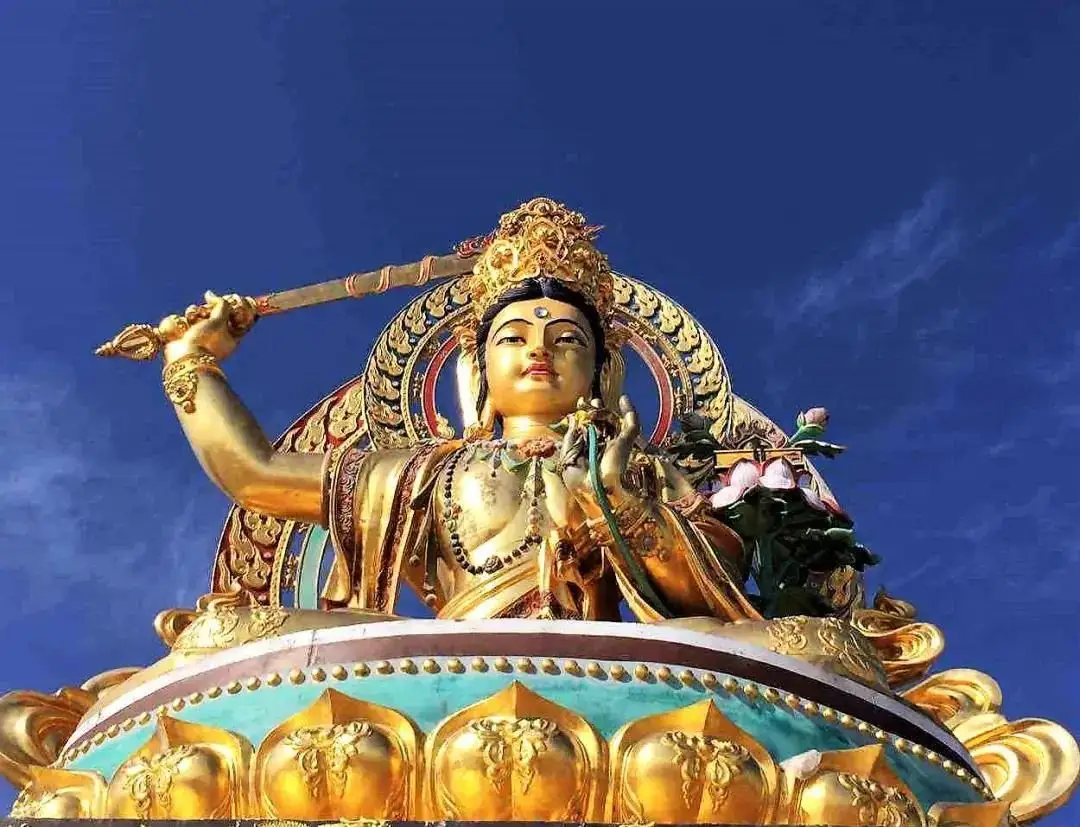Overview
Chinese Name: 五台山
English Name: Mount Wutai;Wutai Mountains;Wutaishan
Location: Shanxi
Type: Ancient culture and art
Rating Level: AAAAA (5A)
Website: http://www.wutaishan.com.cn/

Brief Introduction
Mount Wutai, located in Xinzhou City, Shanxi Province, is between 38 ° 55 ‘- 39 ° 66’ north latitude and 113 ° 29 ‘- 113 ° 39’ east longitude. The scenic spot has a planned area of 607 square kilometers and an administrative area of 436 square kilometers.
Mount Wutai is a place where Buddhist temples with green temples and yellow temples coexist in China. There are 86 places for religious activities, many of which are built by imperial edicts and many emperors come to pay homage. Famous ones include Xiantong Temple显通寺, Tayuan Temple塔院寺, Bodhisattva Temple菩萨顶, Nanshan Temple南山寺, Bishan Temple碧山寺, etc.

Mount Wutai is one of the four famous Buddhist mountains in China. In 2004, Mount Wutai was rated as one of the top ten famous mountains in China. In June 2009, Mount Wutai was listed as a world cultural heritage site. In 2007, it was rated as a national AAAAA tourist attraction.

Mount Wutai, literally, ‘the five terrace mountain’, is the highest in Northern China and is remarkable for its morphology of precipitous slopes with five open treeless peaks. Temples have been built on this site from the 1st century AD to the early 20th century.
History of Mount Wutai
Wutai Mountain was originally inhabited by God, so it was named Zifu. It is called Zifu Mountain紫府山, also known as Wufeng Mountain五峰山. There was a Zifu temple, which is the place where Taoists practice.
It is generally recognized that Buddhism was introduced to the Wutai Mountain during the Eastern Han Dynasty. In the 11th year of Yongping永平 (68 years), Kasyapa Matanga迦叶摩腾 and Dharmaratna竺法兰 came to the Wutai Mountain (then called Qingliang Mountain清凉山). Because there was Ashoka‘s阿育王 stupa in the mountain long ago, and Mount Wutai was the place where Manjusri Bodhisattva文殊菩萨 performed and lived, the two built a temple here.

During the northern and Southern Dynasties, the development of Buddhism in the Wutai Mountain reached its first climax. Emperor Xiaowen of the Northern Wei Dynasty北魏孝文帝 expanded Lingjiu Temple on a large scale, and built twelve temples around it, including Shanjing Temple善经院 and Zhenrong Temple真容院. During the Northern Qi Dynasty, the number of temples on the Wutai Mountain soared to more than 200.

In the Tang Dynasty, Buddhism was highly respected, and Manjusri Bodhisattva was especially respected by Buddhists. At that time, the State stipulated that the holy image of Manjusri Bodhisattva must be enshrined in the vegetarian halls of all monasteries in the country. As both the government and the people respect Manjusri Bodhisattva and regard the Wutai Mountain as a Buddhist holy land, Mount Wutai is unprecedentedly prosperous, and famous monks have emerged in large numbers. Chengguan is a prominent representative.

Another sign of the formation of the Buddhist holy land of the Wutai Mountain in the Tang Dynasty is the infinite admiration and competing pilgrimage of foreign Buddhists to the Wutai Mountain. The Tang Dynasty was a prosperous and powerful country with a high reputation in the world. It was the center of economic and cultural exchanges among Asian countries. With the expansion of international exchanges, the Wutai Mountain is also admired by Buddhists in India, Japan, North Korea, and Sri Lanka. There are many foreign monks who worship Mount Wutai and go to Mount Wutai to seek Buddhist scriptures and dharmas.

What are worth visiting and seeing?
After the Writing Cliff写字崖 is wet with water, wipe it carefully with a handkerchief. The cliff surface will show similar Zhuan Li script handwriting, and the water-dried words are hidden. Someone once removed the cuticular stone layer, but as a result, words can still be scratched on the lower layer. There are words at different levels.

Wanghai Peak望海峰, with an altitude of 2795 meters, is named after “steaming clouds and bathing in the sun, refreshing autumn, and looking at the bright clouds in the East, like a pond like a mirror”. Due to the high altitude and low temperature at the top of the platform, cotton-padded clothes are still required in midsummer.

Wuye Temple五爷庙, also known as the hall of the Five Dragon King五龙王殿, is located in the center of Taihuai Town台怀镇, Wutai County, Xinzhou City, Shanxi Province. It was first built in the 44th year of Wanli in the Ming Dynasty (1616).
The Wuye Temple sits in the north and south as a whole. The main buildings are the Five Dragon King Hall and the Manjusri hall, covering a total area of 2040 square meters. There are 6 halls, 3 Chonglou, 20 monk houses, 1 stage, 2 pagodas, and 3 Ming Tombs; It is one of the most popular temples on Mount Wutai.
Buddhist mountain of China Wutai Mount
You might be interested in: